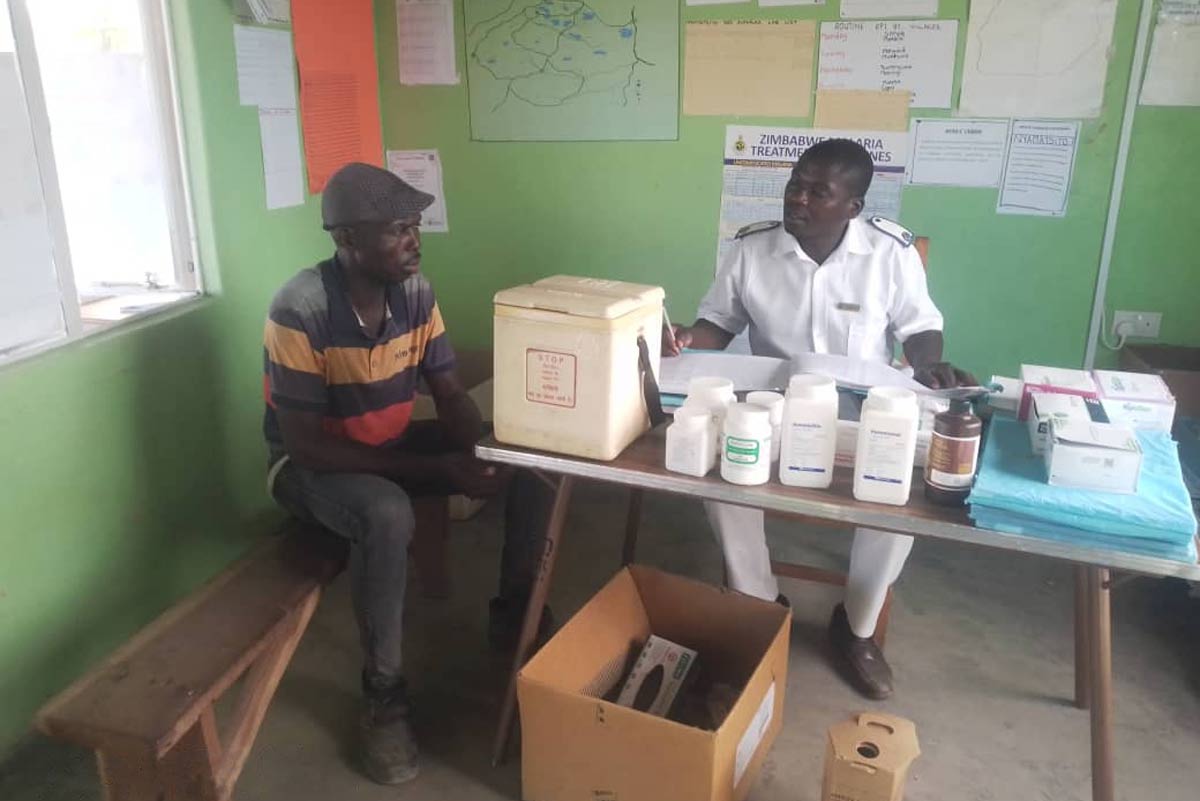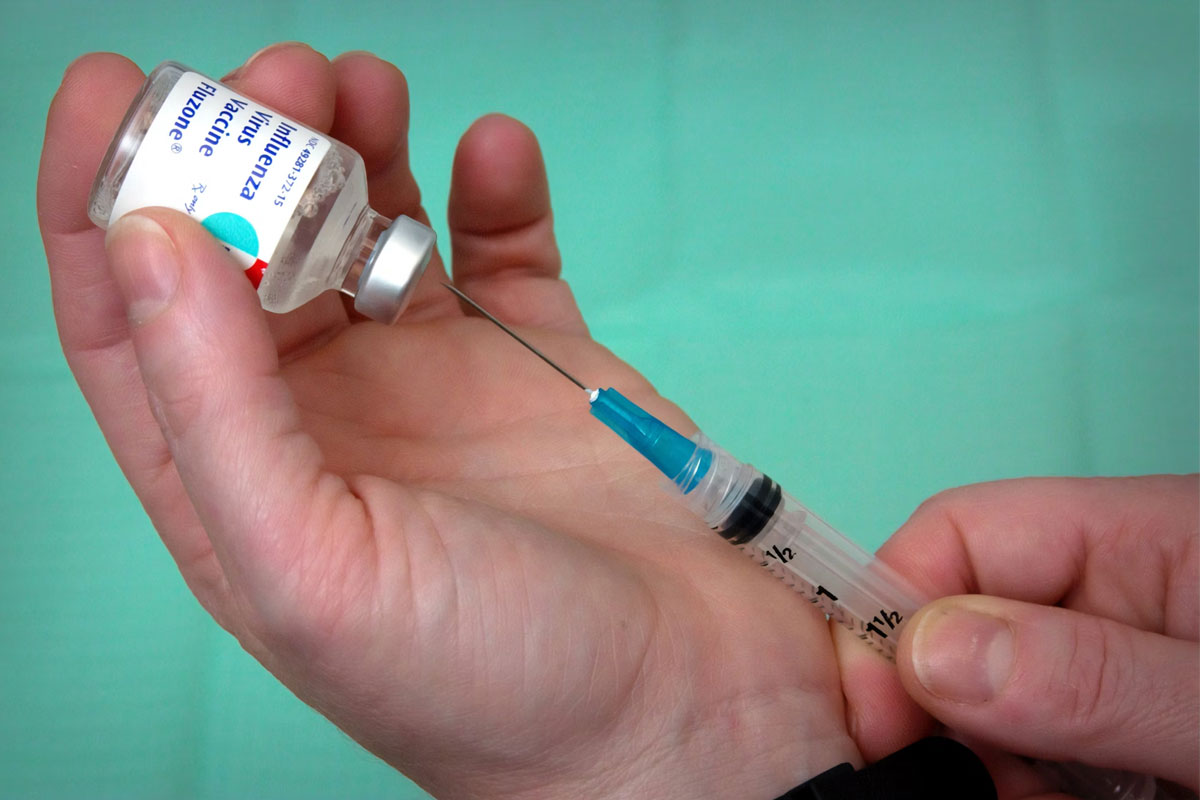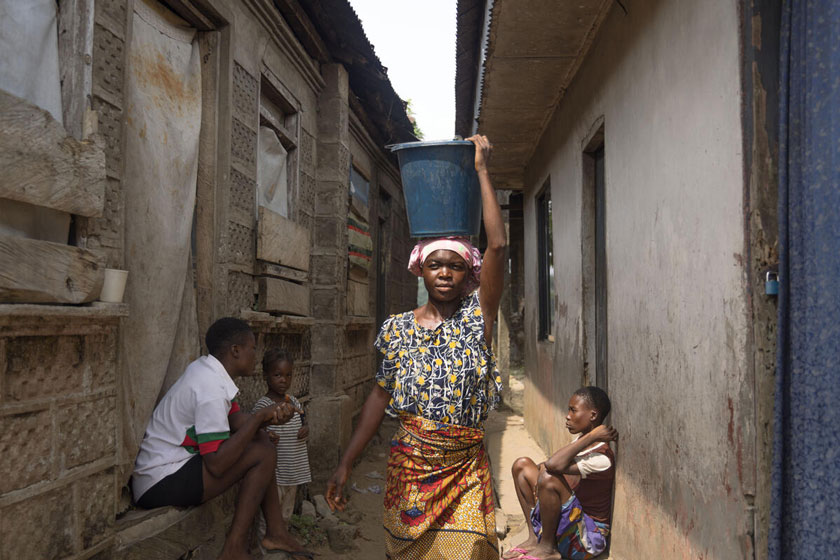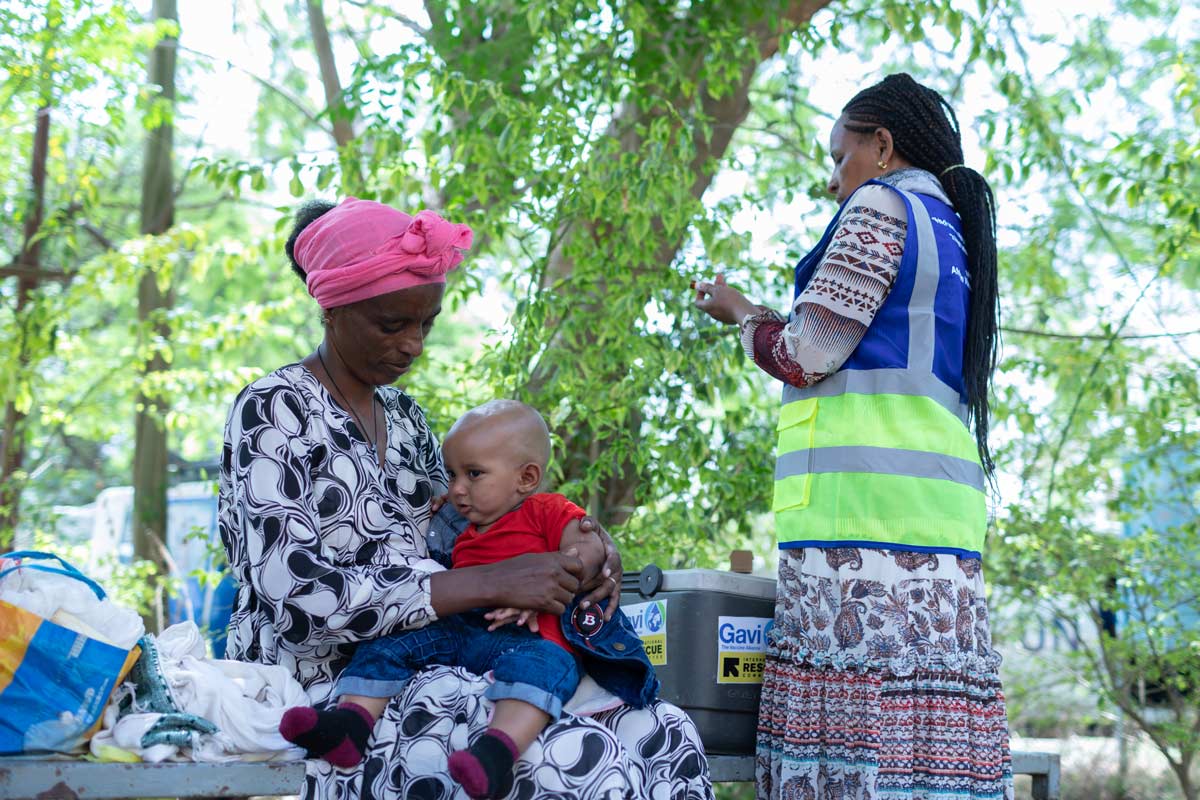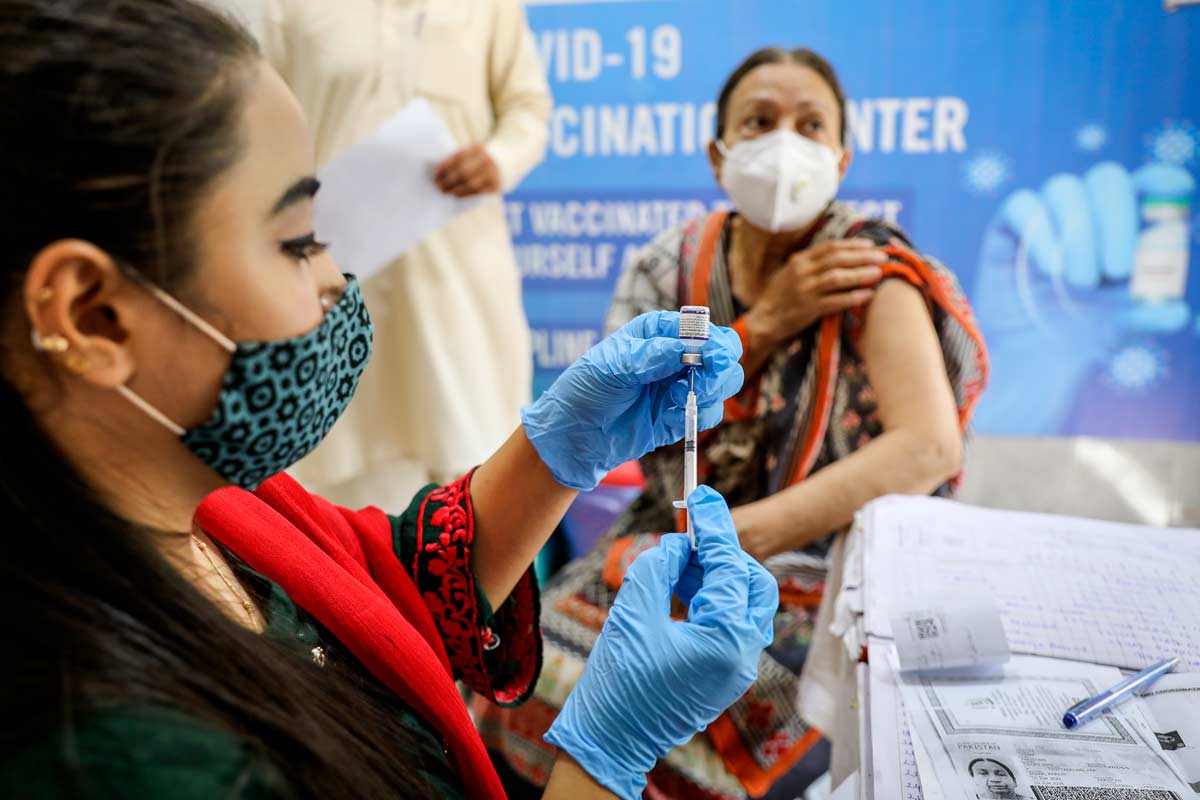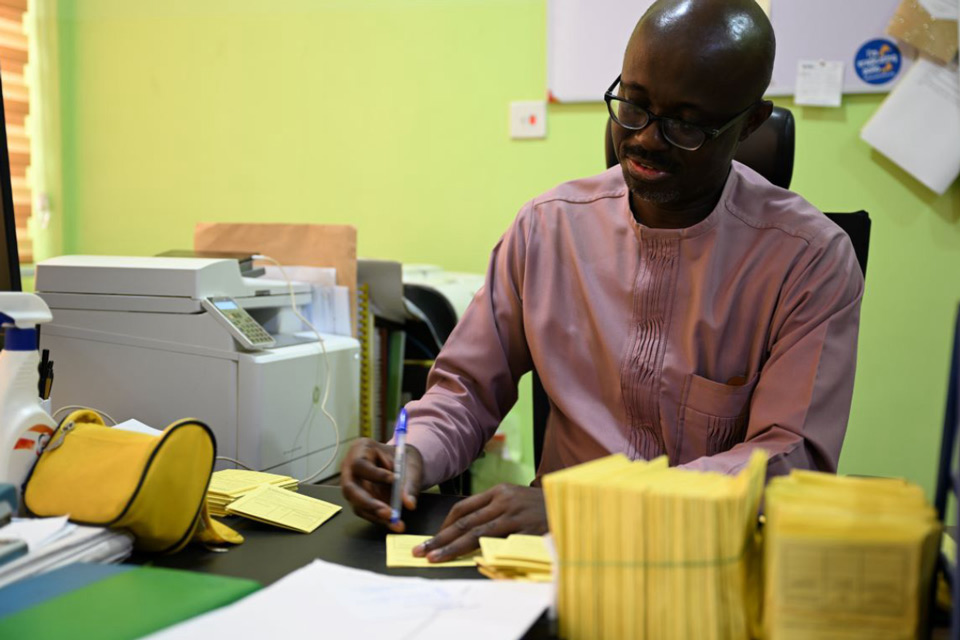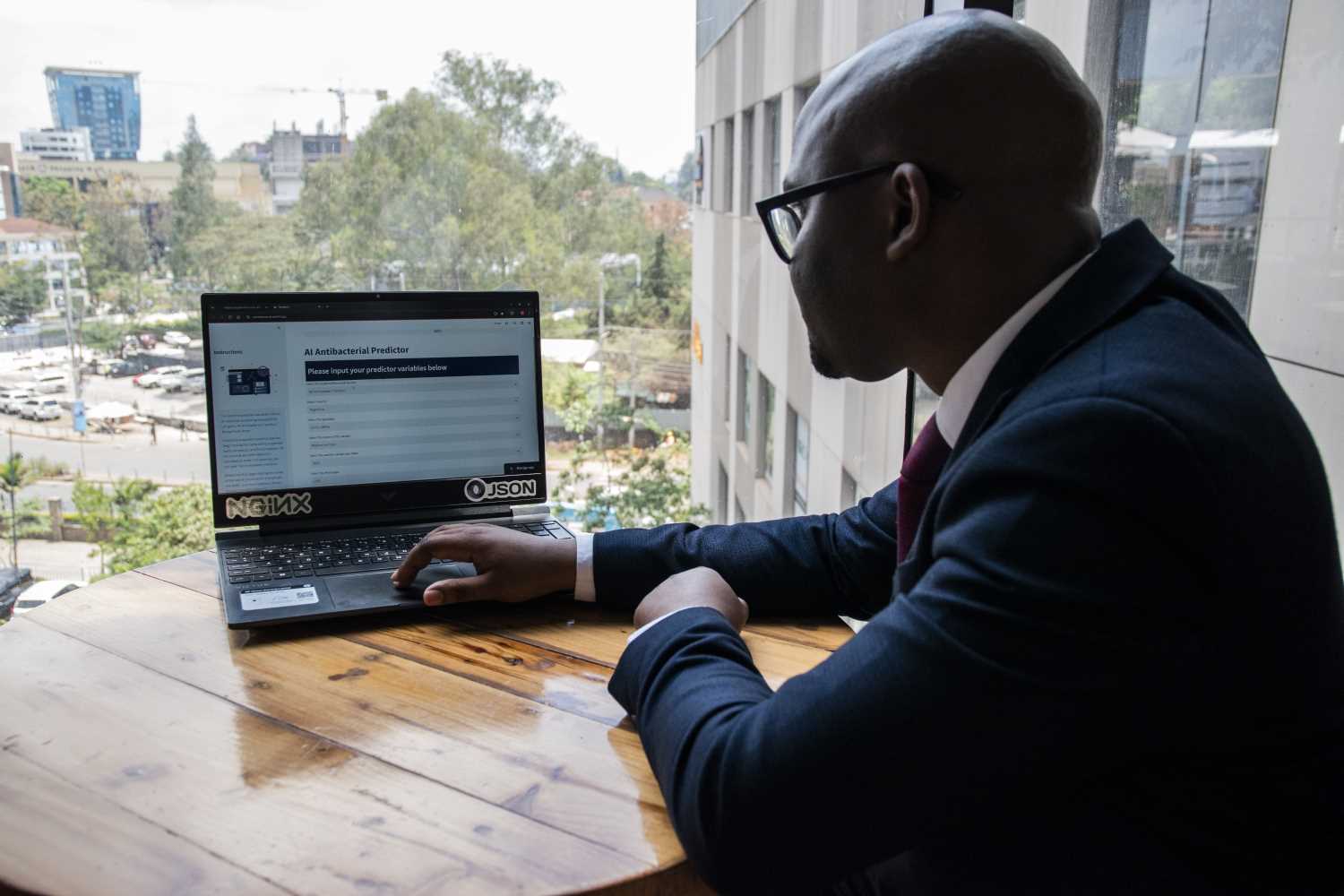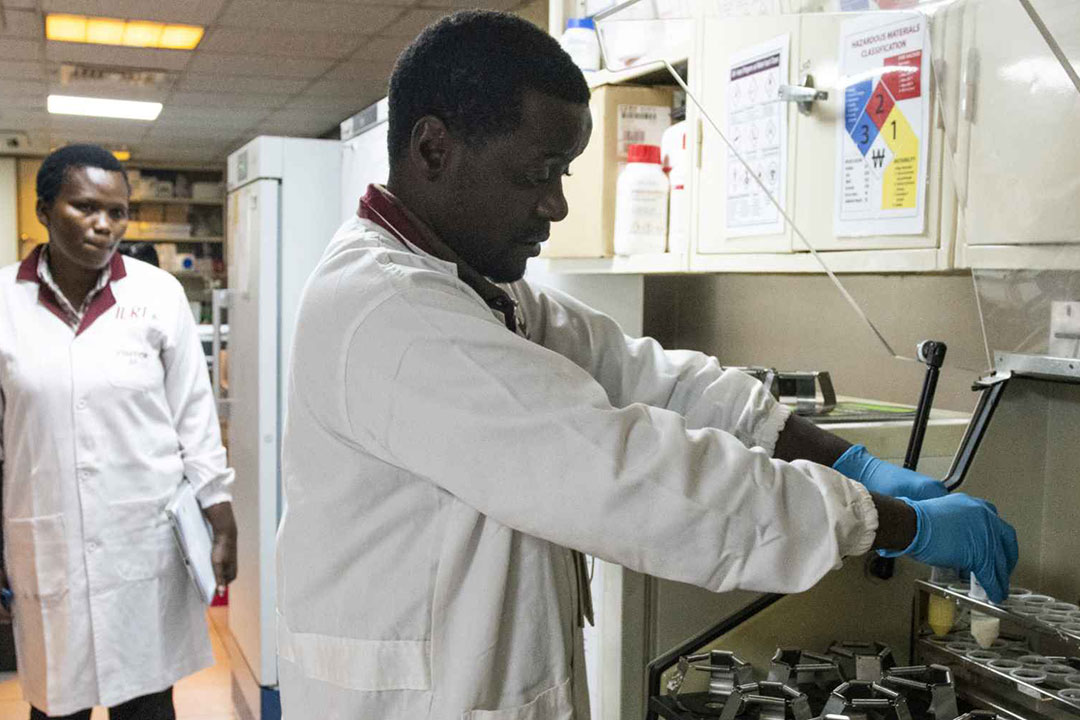Medicines for Africa: with cutting-edge research, Ghana is at the forefront
In Ghana, a state-of-the-art university laboratory is training a new generation of African scientists to develop treatments for malaria, tuberculosis and cancer.
- 24 July 2025
- 10 min read
- by Claudia Lacave
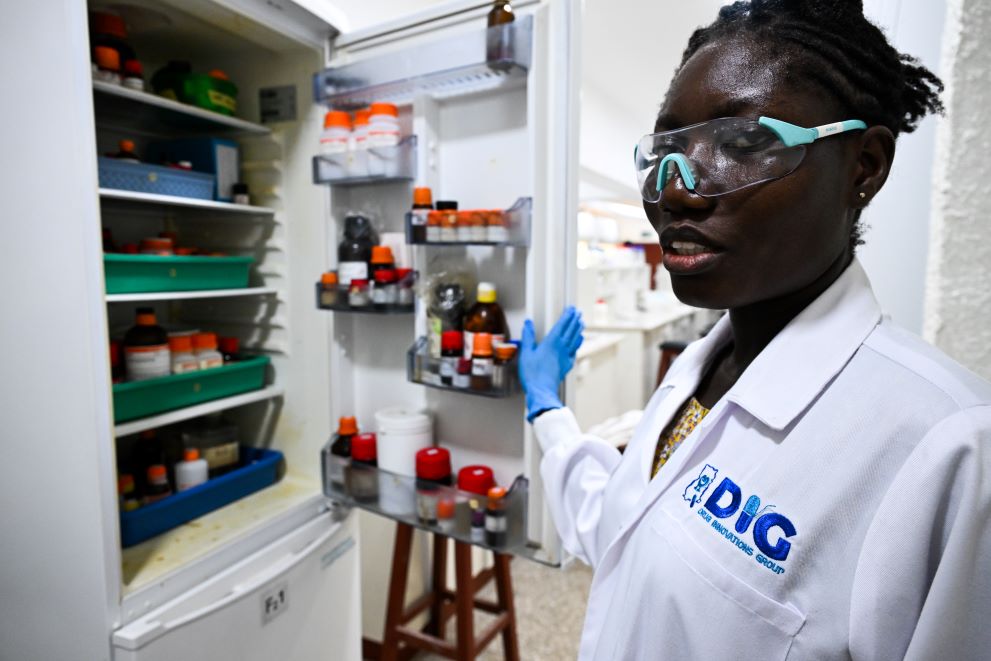
Testing starts small.
Hagar Afriyie, a 29-year-old master’s student, selects reagents from the lab fridge, mixes them in a flask, and waits – after 30 to 120 minutes of stirring, the reaction is complete. Friedel-Crafts, Suzuki couplings, Williamson ether syntheses, or amide formations – she carries out dozens each week. In the bright, modern lab of the Drug Innovation Group (DIG) at the University of Ghana, she is helping to identify promising compounds in the fight against malaria.
Since 2016, Ghana has been leading the development of a research network in medicinal chemistry. It is now the second country in Africa – after South Africa – capable of carrying out the early-stage design of drug candidates.
The new lab officially opened in May 2024, and focuses on malaria, TB and cancer. Thanks to support from the Bill & Melinda Gates Foundation, the facility is equipped with more than US$ 100,000 worth of advanced machinery – including extractors, rotary evaporators and a mass spectrometer. With limited public funding for research, DIG has turned to development agencies and non-profit partners to scale up its work.
Among its initiatives, the 16-member team – half of them students – is contributing to the Grand Challenges African Drug Discovery Accelerator (GC ADDA), backed by the Gates Foundation and the non-profit LifeArc. The US$ 4.7 million programme supports a continent-wide network of scientists in Ghana, South Africa, Mali, Cameroon, Zambia and Zimbabwe, with an ambitious goal: to discover new treatments for malaria and tuberculosis.
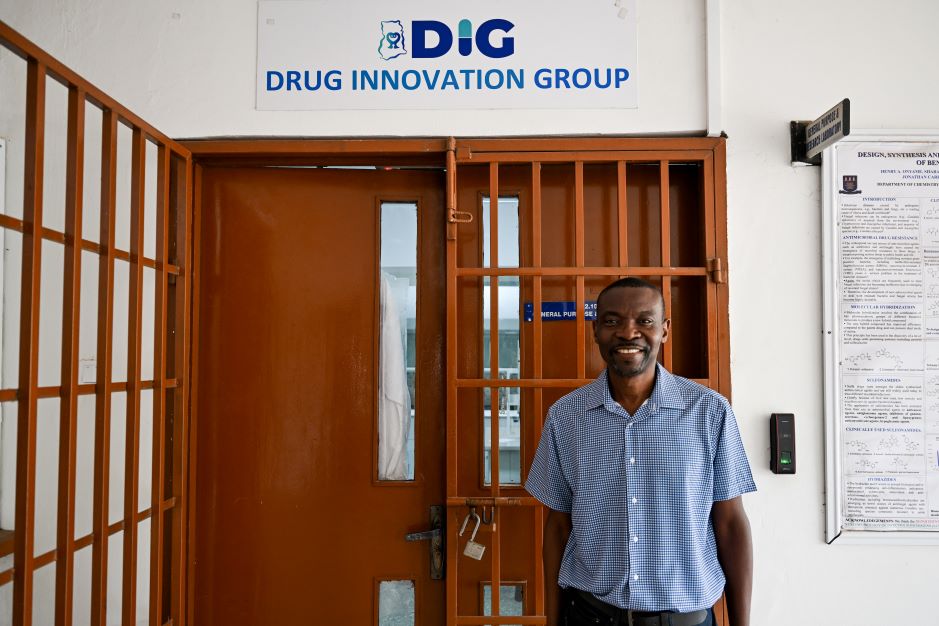
Credit: Claudia Lacave/Hans Lucas
“Parasites that cause disease are incredibly smart – they always find new ways to get around existing drugs,” says Dr Richard Kwamla Amewu, head of DIG. With resistance to current treatments on the rise, Africa is facing an urgent challenge. Ghana is among the countries hardest hit by tuberculosis – a disease with rapidly rising rates of drug-resistance – with a prevalence of 290 cases per 100,000 people. The country also ranks among the 15 nations with the highest malaria burden, accounting for 2% of global cases and 3% of global deaths.
Drugs for diseases of poverty
These are diseases that primarily affect low-income countries, where purchasing power is limited – and, as such, the commercial incentive to develop drugs to combat them is low. “The capacity to discover and develop new drugs exists, but it’s being directed elsewhere – to diseases that affect wealthy countries,” says Dr Charles Mowbray, Discovery Director at the Drugs for Neglected Diseases initiative (DNDi). “That’s the target market for companies with these capabilities. They’re focused on business, not on patients.”
DNDi, a Swiss non-profit founded in 2003 by Médecins Sans Frontières (MSF), the World Health Organization, and five research centres worldwide, was created in response to that gap. Its founding observation was blunt: the commercial pharmaceutical model cannot deliver safe, effective medicines for everyone.
With support from government development agencies and philanthropic organisations, DNDi develops treatments for the most vulnerable populations – often excluded from clinical trials because of age, gender or other specific needs.
Dr Mowbray originally worked for a large pharmaceutical company. But over time, frustration grew. “I was working on the early stages of a very long process. If I discovered a promising molecule, I wanted colleagues to take it further and turn it into a medicine for patients. But pharma companies often change their priorities. My work on HIV, for example, was shelved simply because it was no longer commercially interesting.”
Fourteen years ago, he decided to leave. He went from an organisation with hundreds of thousands of employees to a small, networked team of a few dozen people, collaborating with scientists around the world – focused on patient needs and committed to delivering effective, affordable treatments.
Picking up where big pharma leaves off
The process is long: identifying molecules, developing them into drug candidates, conducting clinical trials in remote or difficult settings, and finally persuading pharmaceutical companies to manufacture the treatments at low or no cost. Over the past 20 years, DNDi has delivered 13 treatments for diseases like paediatric HIV and hepatitis C. Where possible, they pick up where big pharma left off – taking promising compounds that were abandoned for commercial reasons.
One example is fexinidazole, a treatment for sleeping sickness (trypanosomiasis) transmitted by the tsetse fly. The molecule was originally developed by Hoechst in the 1980s, but never brought to market. It eventually replaced melarsoprol, the standard treatment at the time. “It was a horrific drug,” says Dr Mowbray. “It required painful injections for more than ten days, and it was extremely toxic – 10% of patients who received it died. They described the infusion as feeling like fire in their veins.”
One of the most striking lessons from today’s session, he adds, is about Africa’s genetic diversity. “The genetic mix of people living in Africa is more varied than anywhere else in the world. That means their susceptibility to disease, their response to treatments, side effects, the dose required – even the treatment itself – can differ. That’s a fundamental point.”
– Dr Charles Mowbray, Discovery Director at the Drugs for Neglected Diseases initiative (DNDi)
DNDi was able to identify a promising compound from a scientific publication and, after years of development and testing in animals and humans, fexinidazole – a once-daily tablet taken over ten days – began treating patients in the Democratic Republic of the Congo in 2019. The progress since then has been remarkable. Thanks to a range of public health interventions in sub-Saharan Africa, where the disease is most prevalent, the incidence of sleeping sickness has plummeted: from 40,000 cases in 1998 to fewer than 1,000 annually today. In January 2025, the WHO officially declared that Guinea had eliminated human African trypanosomiasis.
Local expertise and global cooperation
Sanofi, the pharmaceutical company that originally developed melarsoprol, agreed to manufacture and donate the new drug to affected countries – but only after DNDi had de-risked the project by investing heavily in early development and navigating the regulatory approval process with health authorities. Dr Mowbray welcomes this partnership and acknowledges the commitment of other companies to global health. Swiss firm Novartis, Japan’s Eisai, and the UK-based GSK all took part in the Africa Drug Discovery conference, hosted by the University of Dundee in Accra this past March – an event that brought together researchers from across the continent to share the latest scientific advances and strengthen the pan-African research network.
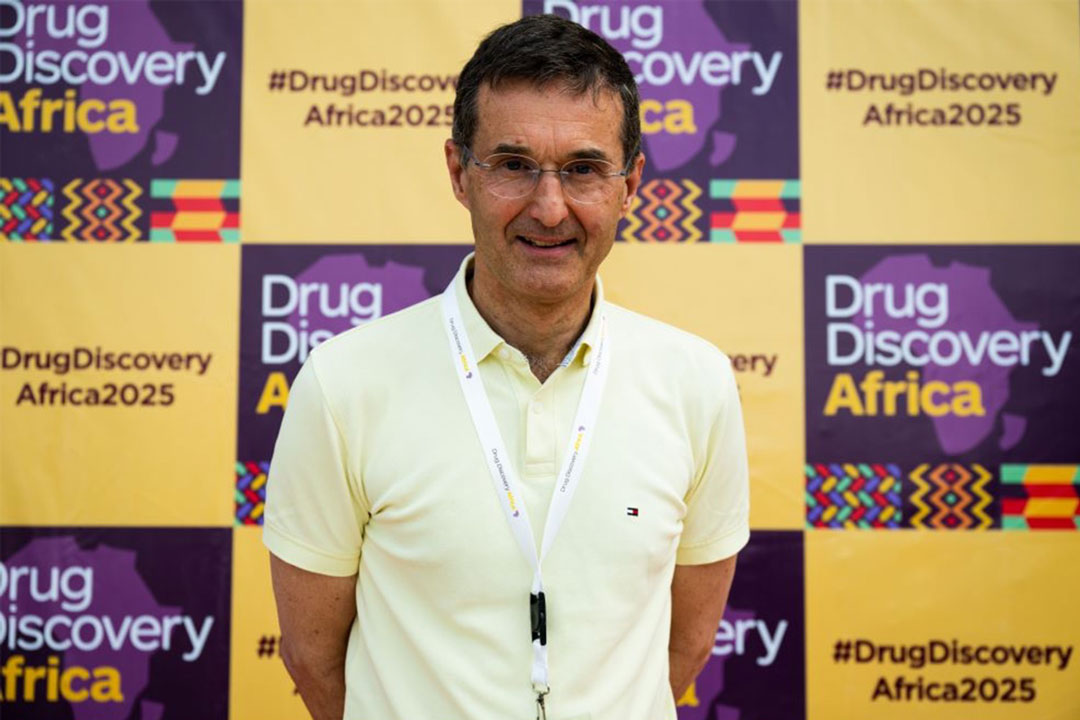
Credit: Claudia Lacave/Hans Lucas
The need for treatments tailored to Africa is real. Beyond growing resistance to diseases and parasites, the effects of medicines can vary widely between populations. “One of the most striking sessions this morning was about the genetic diversity of people living in Africa – it's greater than anywhere else in the world!” emphasises Dr Charles Mowbray. “That means susceptibility to disease can differ, as can treatment response, side effects, dosage – even the treatment itself. It can be that fundamental.”
On top of this, the socioeconomic context matters: patients’ living conditions, access to infrastructure, and the availability of cold chains all point to the need for oral treatments that are easy to store in hot and humid climates.
This need for locally adapted research has inspired new vocations. “When I was younger, I was always drawn to hospitals and medicine,” says Hagar Afriyie in a quiet voice, speaking from the DIG lab with a scientist’s coat over her shoulders. “I didn’t know you could study medicinal chemistry. I was so happy when I found out, because I really wanted to help others!”
The bright, white laboratory is equipped with advanced technology for performing chemical reactions between precursors – the building blocks of synthetic organic chemistry. Unlike natural products chemistry, which is widely practised across the continent and focuses on identifying and testing compounds from plants or traditional remedies, synthetic chemistry is still in its early stages in Africa.
Thanks to the creation of a continent-wide research hub, Hagar had the opportunity to complete a six-week internship at H3D, the drug discovery centre based at the University of Cape Town – the most advanced institution in the region for pharmaceutical research.
Have you read?
She also took part in the DNDi’s Open Synthesis Network, a global training programme that equips students to work on neglected diseases. Using existing compounds, Hagar and the DIG team worked on modifications aimed at treating Chagas disease and mycetoma. She helped synthesise the new chemical reactions, and the most promising molecule was sent to DNDi’s Swiss laboratory for further analysis.
Hagar is now in the final stages of writing her thesis, which explores new pathways for malaria treatment.
Still a long way from the first drug
Training the next generation of scientists – that’s the heart of DIG’s mission and the projects it takes part in. “When I came back to Ghana after working in England, there was no one with the skills in organic synthesis to collaborate with,” recalls Dr Amewu from his office as head of the chemistry department. “The team we have today, I trained locally – starting from undergraduate level.”
In 2016, he launched the academic group that later became the Drug Innovation Group (DIG) in 2020. With support from the Gates Foundation, the University of Dundee, H3D, Medicines for Malaria Venture (MMV), and LGenia, the Ghanaian drug discovery network was officially established in 2022. It brings together several institutions: DIG, which handles chemical synthesis; the Noguchi Institute, which conducts biological testing of new compounds; and Kumasi Technical University, where a researcher has been trained to study how drugs behave in the human body (DMPK).
In October 2023, Ghana joined the Gates Foundation’s GC ADDA programme, strengthening its role in the continental research network. Compounds are now being sent to Mali, Cameroon and South Africa for specific types of testing. This exploratory phase in drug development draws on a wide range of scientific expertise – the kind usually found all under one roof in a pharmaceutical company. But in the public sector, and in the world of neglected diseases, networked collaboration is essential to move faster and increase the chances of success – which remain low. “The odds of success in this field are just 3%,” says Dr Amewu.
While the ultimate dream of any researcher is to see a molecule become a medicine on pharmacy shelves, DIG hasn’t reached that point yet. Still, for Dr Amewu, the progress made in training scientists and building up lab infrastructure already counts as a major win – and he’s optimistic about the future:
“There may come a time when even our own students, who left to study abroad, decide to return – because of the facilities we’ve built here.”
More from Claudia Lacave
Recommended for you
